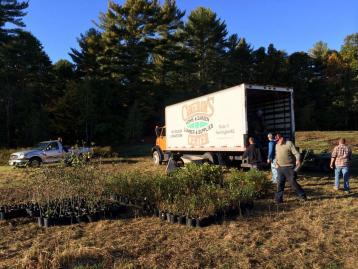Stewardship Tip: Removing Invasives--with Machine and Volunteers
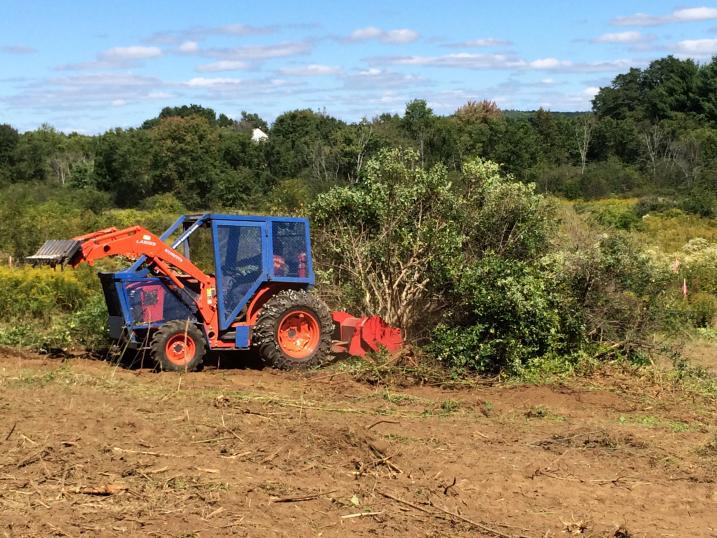
“It’s so small!” I thought, when I first saw the tractor with its mower attachments at Durham’s Oyster River Forest several weeks ago. I was curious about the habitat restoration work happening on this town-owned conservation area that will benefit New England cottontail and other wildlife. The tractor and its attachments--a Kubota with a mower on the back and large rake on the front—was on site to pull out, grind up, and mulch the large invasive shrubs growing in an 8-acre field.
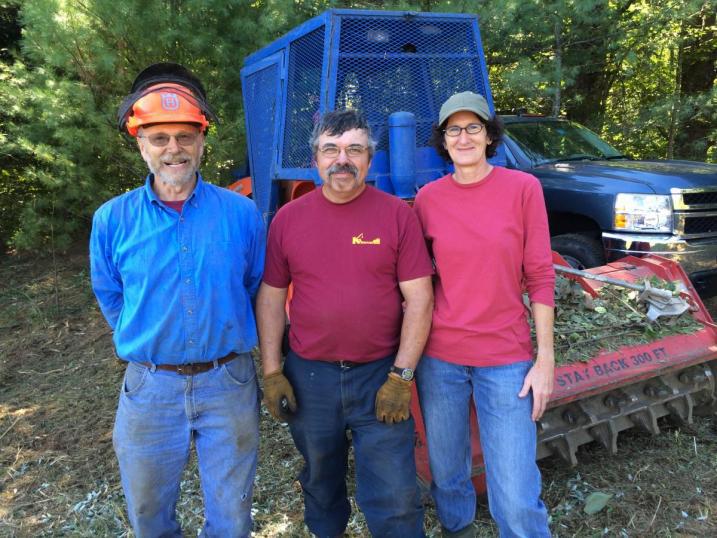
Gerry Hawkes, founder of Forest Savers, designed and built several of the attachments on the tractor. He was on hand to get the work underway; then over the next 5 days John Dumas operated the tractor, with oversight from consultant Ellen Snyder on behalf of the Town of Durham. “The great thing about this machine is that it can do multiple tasks at once: grub out the entire plant, roots and all, grind up the plant, mulch the site in preparation for planting of native shrubs, mow grass, smooth roads and trails, all without herbicides and with flexibility to maneuver around native plants. It’s perfect for the overgrown fields at the Oyster River Forest,” says Ellen.
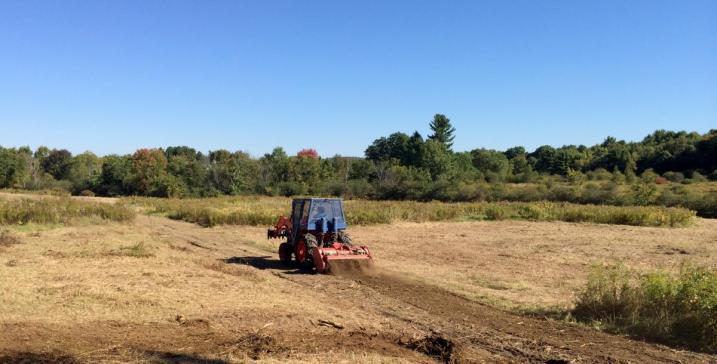
The Natural Resource Conservation Service (NRCS) is funding the restoration of “old field” habitat on the property, to make it more suitable for the New England cottontail, a state-endangered species that exists in only a few parts of New Hampshire, including Durham. The NRCS provides financial assistance for landowners for habitat restoration through programs such as the Wetlands Reserve Program (WRP) and the Environmental Quality Incentives Program (EQIP). At the Oyster River Forest, NRCS holds a WRP easement, which enables this collaborative effort among NRCS, the Town of Durham, the Rockingham County Conservation District (which oversees contracting), contractors, and volunteers.
Until this fall, the fields at the Oyster River Forest hadn’t been mowed or plowed for 10 to 20 years and were overgrown with a suite of large invasive shrubs: multiflora rose, glossy and common buckthorn, bush honeysuckles, and bittersweet vines. Some natives are growing among the invasives, such as common milkweed, gray dogwood, and raspberries and blackberries. These patches of native plants were flagged as “no mow” areas with the help of volunteers.
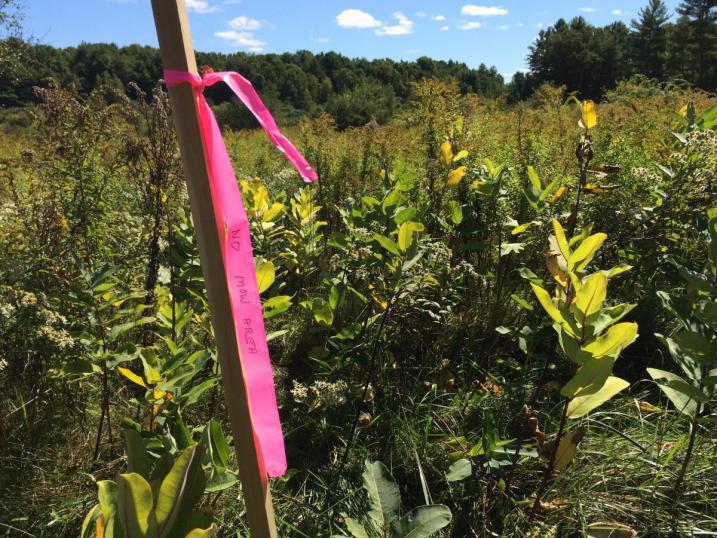
Ellen had heard about Gerry’s machine from Mike Bald, a Vermont contractor who worked with Ellen on removing the invasive wild parsnip found on the site in August (see Pesky Parsnip). “I got excited when I heard that we could remove the invasive shrubs without the use of herbicides," says Ellen. The Oyster River Forest has a mile of shoreline on the Oyster River and is directly upstream from the Town’s water reservoir and is not far from the town’s aquifer recharge site.
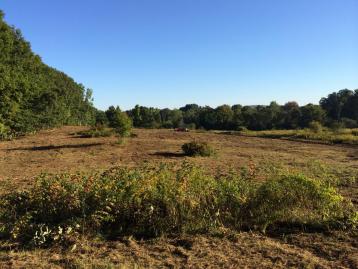
If you visit the Oyster River Forest today you can see the results of the habitat restoration. Hundreds of invasive shrubs are now gone. Patches of native plants, beneficial to monarch butterflies, bees, bugs, cottontails and other wildlife, remain. Runners and hikers will appreciate the newly smoothed field path. And just this week a crew from Cameron’s of Farmington, NH are planting 2,400 native shrubs specifically to benefit New England cottontail.
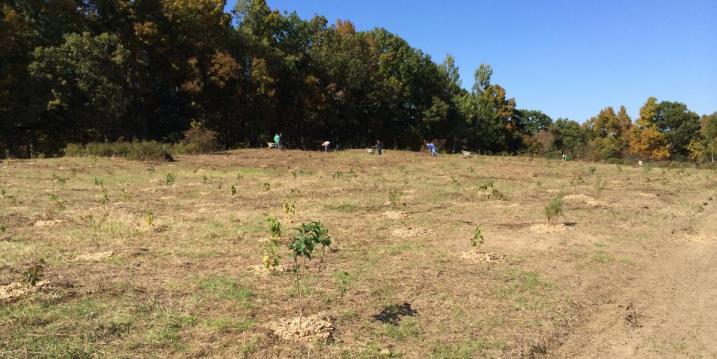
The Town of Durham also sponsored two volunteer workdays at Oyster River Forest this fall, involving locals and University of New Hampshire students in the project. With the heavy work done by machine, volunteers were left with manageable tasks such as spot-pulling invasive plants from field edges, mapping native plant patches, and pulling up stakes and flagging. “Involving the community in the project helps finish the job, but also gets people excited about this new conservation parcel owned by the Town” reports Durham Conservation Commission Chair Ann Welsh, who has helped at the workdays. “While we work, everyone’s learning too--about invasive plants, the property, and other improvements that we could make such as expanding the trail system to connect to UNH’s College Woods.”
All the project partners seem excited about the work at the Oyster River Forest. “We plan to continue this effort into 2015, as there is another 11-acre field to clear and plant and invasive shrubs to grub out of the riparian areas along the Oyster River and its tributary,” says Ellen. “Volunteers will be an important part of monitoring the site over time. We’ll need many hands to pull invasive seedlings until the seed bank is exhausted and healthy habitat is fully restored.”

